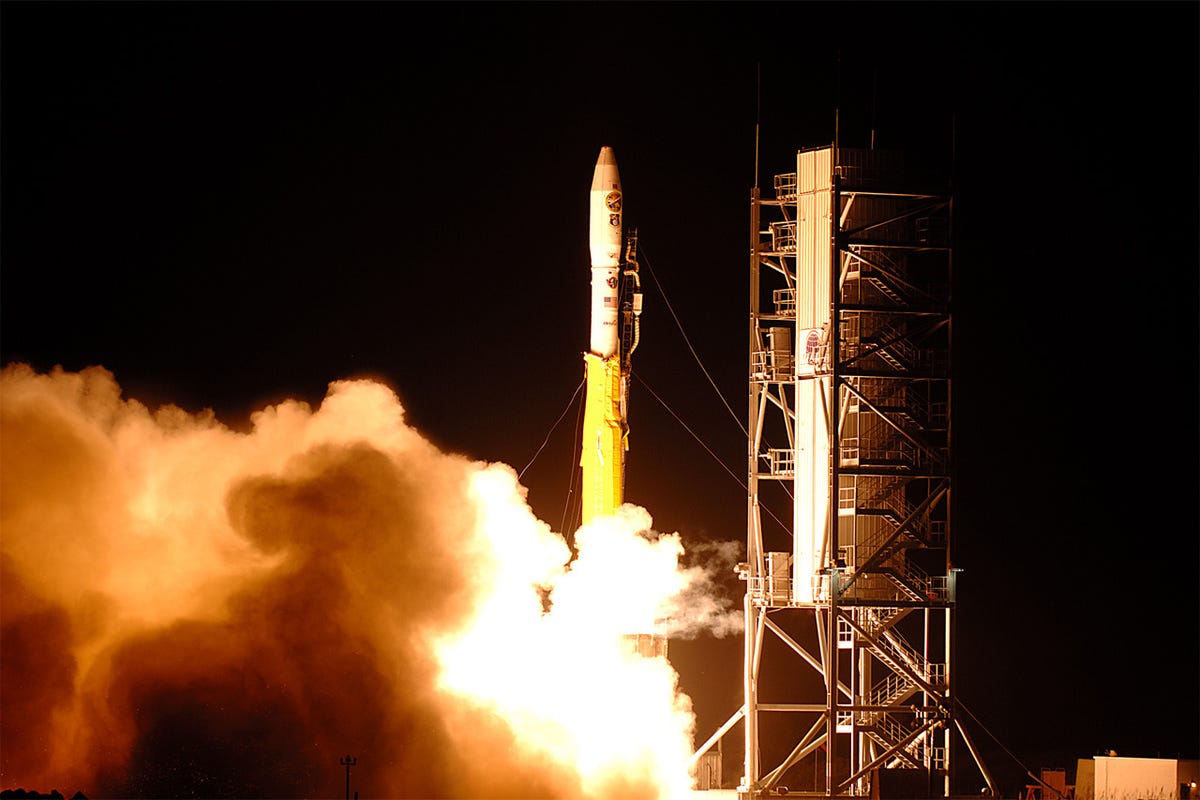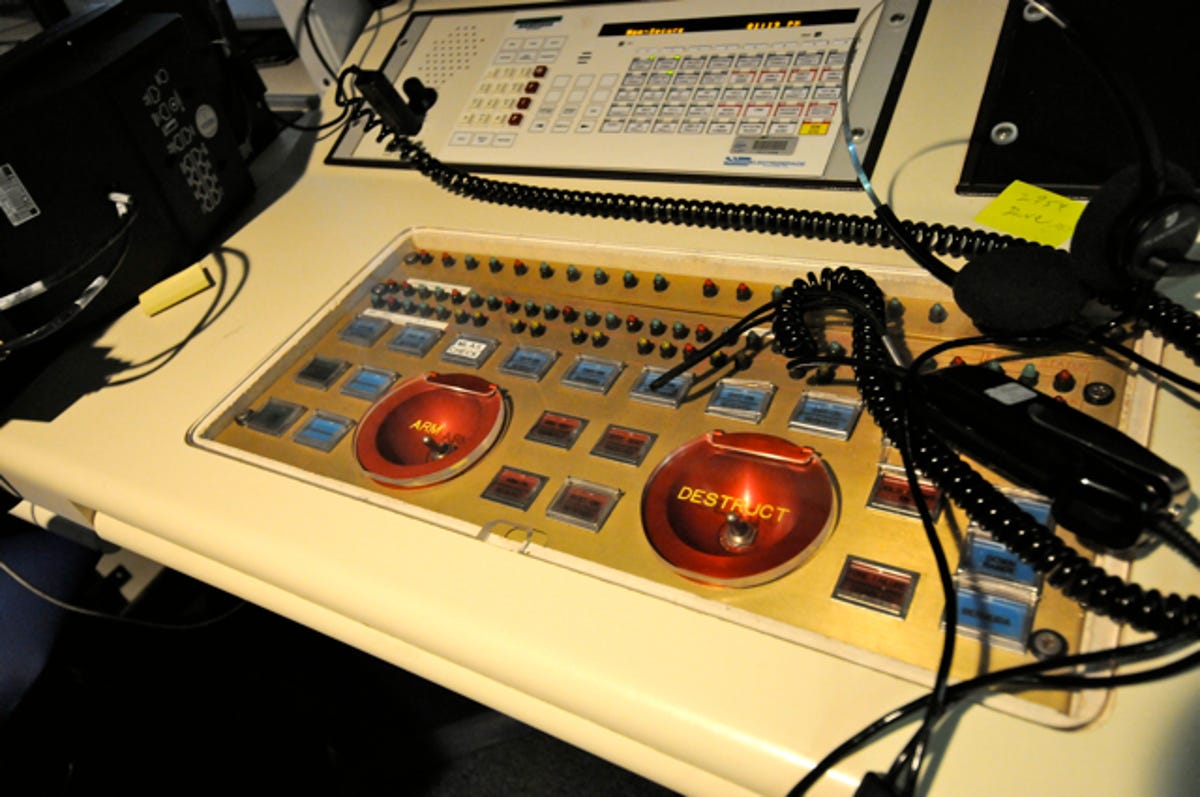High-altitude work flourishes at NASA (photos)
At the Wallops Flight Facility in Virginia, NASA is working on scientific high-altitude rockets and balloons.

Rocket launch
A rocket launches from NASA's Wallops Flight Facility on Wallops Island, Va. The facility, which NASA first began using in 1945 and took over in 1950 is the space agency's site for doing sub-orbital and satellite launches. On average, the site hosts a launch once a month, though sometimes teams from Wallops Flight Facility take their equipment and expertise on the road to do launches in other parts of the world in order to study specific scientific applications.
CNET reporter Daniel Terdiman visited the facility as part of Road Trip 2010. You can follow the entire project here.
Launching into aurora
Though most of its rocket launches are done on Wallops Island, Va., NASA's Wallops Flight Facility also takes its show on the road. In many years, that includes trips to Alaska to fire rockets into the aurora borealis in an attempt to study the phenomenon's scientific principles.
Model balloons
While a major part of the mandate at Wallops Flight Facility is building, launching, and studying rockets designed for sub-orbital flight or putting satellites in orbit, the NASA site is also where the space agency does most of its research into designing and crafting high-altitude balloons. Those balloons are used for hoisting scientific payloads high into the sky.
These are scale models of some of the balloons that are designed at Wallops Flight Facility.
Balloon fabric
The material for the high-altitude balloons that are designed at NASA's Wallops Flight Facility is the thickness of a sandwich bag but is very strong.
High-altitude balloon
A NASA image of one of the balloons rising into the sky. Some of the balloons, when fully inflated, have a capacity of 40 million cubic feet, enough to hold an entire pro football stadium.
Pad 0B
The current main gantry at Wallops Flight Facility, this is Pad 0B.
Water tower
Near Pad 0B is Pad 0A, which is currently under construction. That pad will be used to launch the Taurus 2 rocket, starting in 2011, which will be used to fly supplies to the International Space Station. Those rockets will be launched by commercial companies like Orbital and SpaceX.
This is a water tower that will house a water deluge system designed to allow rockets to dump water in order to dampen vibrations from heating when ignition begins.
Unlike those launched from Pad 0B, and other NASA launch pads, rockets constructed at Pad 0A will be stacked up horizontally, while lying on a ramp. When completed, they will be driven to the gantry and raised.
Command center
The Wallops Flight Facility command center. Here, NASA personnel and others invested in a launch can watch and monitor the progress of a rocket. For a satellite launch, the room will generally be full, while for the launch of a student rocket--which happens each summer when the facility hosts a program for university students--it may be just partially full.
Launch shed
For sub-orbital launches, the Wallops Flight Facility sends rockets aloft from three sheds like this one. They have roll-up doors so that motors and other elements of a rocket, including the payload, can be brought in from either end. Then, instead of moving the rocket, the shed is moved away on rails and the rocket is raised and launched.

Arm and destruct
Though it would rarely be used, NASA maintains a destruct button in the command center at Wallops Flight Facility that can destroy a rocket while it's in the air. This would be used if it is determined that a rocket is endangering the public.
Rocket tip
On Thursday, students taking part in the third-annual RockOn program launched a sub-orbital rocket from the Wallops Flight Facility. Hours after the early morning launch, its pieces, including the tip, seen here, are brought back to the facility to be analyzed.
Rocket arrives
Crews return the main stages of the student-launched sub-orbital rocket to the Wallops Flight Facility on Wallops Island, Va., on Thursday.
Return of the rocket
The two main stages of the student-launched rocket sit after being returned to the facility. The stages were then examined and taken apart so the students and their advisers could see the results of the their experiments.
Aluminum tubes
At Wallops Flight Facility, NASA maintains a machine shop that is more or less a "one-stop shop" for the construction of many of the rockets that are launched there.
These are untouched aluminum tubes that will be used to make the rockets.
Aluminum shavings
Inside the machine shop, a cart is overflowing with aluminum shavings.
Making doors
Here, a NASA employee works on a section of aluminum tubing to cut a door into it. The machine is a Haas VF11.
Machined aluminum
While not completed, this is what some of the aluminum tubing looks like after being worked on in the machine shop at the Wallops Flight Facility.
Rocket balancer
Once the machining is finished, a rocket will be placed on this balancing machine, which is designed to spin it as weights are placed on it in different locations in order to make sure that payloads are properly balanced.
Wiring rocket parts
A NASA employee works to wired up a future rocket.
Wired aluminum rocket sections
A look at the wired up sections of a future rocket.
Flight simulator
This system is used to do flight simulations of newly built rockets to ensure that they are flight worthy and will perform as designed.
Navy ship building
In 1985, the U.S. Navy returned to the Wallops Flight Facility after having left in 1959. Now, the Navy uses the facility for several things, including training. This oddly shaped building is used to train personnel on the electronics that will be integrated into the next-generation of Navy ships.
Aegis
This building is used to train Navy personnel on the electronics of current-generation Aegis cruisers and destroyers.
Aircraft carriers
This tower is on top of a third Navy building, which is used to train personnel on the systems of aircraft carriers.
NOAA dishes
The Wallops Flight Facility is also shared by the National Oceanic and Atmospheric Administration, which utilizes these satellite dishes as part of its command and control system for weather satellites.

